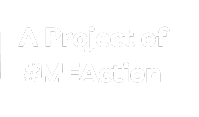Zofin
Zofin or Organicell Flow is an unapproved treatment that has been used on a number of patients severely ill with long-lasting COVID-19 symptoms under a compassionate use authorization.[1][2] Zofin is a biological product derived from the human amniotic fluid (HAF) donated from the births of healthy, newborn babies; it is administered by intravenous infusion.
Zofin is produced by the company Organicell which states that it "contains over 300 growth factors, cytokines, and chemokines as well as other extracellular vesicles/nanoparticles derived from amniotic stem and epithelial cells" including the proteins CD63, CD81, and CD9 in addition to high expression of CD133.[1]
Theory[edit | edit source]
According to Organicell, pro-inflammatory cytokines believed to be targeted by Zofin include tumor necrosis factor (TNF), IL-6, and IL-8, and published research states that targeting these may "reduce the severity of symptoms associated with elevated immune response".[1]
Theory[edit | edit source]
Evidence[edit | edit source]
Clinicians[edit | edit source]
Risks and safety[edit | edit source]
Zofin has not yet been approved for use and clinical trials remain ongoing.[3]
Risks, side effects and safety are largely unknown.
Costs and availability[edit | edit source]
Zofin is not yet an approved drug and availability is limited to special authorizations.
See also[edit | edit source]
Learn more[edit | edit source]
- Organicell reports positive results from compassionate use of Organicell Flow - Organicell
- Clinical trial NCT04384445
References[edit | edit source]
- ↑ 1.0 1.1 1.2 Organicell (May 27, 2020). "Organicell Reports Positive Results from Compassionate Use of Organicell Flow in Severely Ill COVID-19 Patients". Retrieved December 13, 2020.
- ↑ Caldwell, Blair (November 23, 2020). "Savannah doctor providing treatment for long-term COVID-19 effects". WTOC. Retrieved December 13, 2020.
- ↑ https://clinicaltrials.gov/ct2/show/NCT04384445

